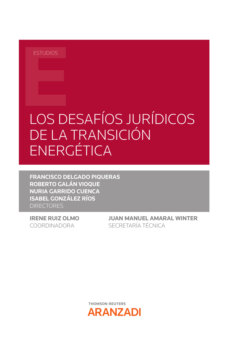Читать книгу Los Desafíos Jurídicos de la Transición Energética - Isabel González Ríos - Страница 55
На сайте Литреса книга снята с продажи.
1. NEW PRODUCTION SITES
ОглавлениеThe production of electricity from renewable sources is often not possible at sites and in regions currently supplying power from fossil fuels and nuclear power. A striking example of this is the often-reduced effectiveness of inland wind turbines when compared to those located on or near coastlines. In the EU’s northern states, some of the largest wind turbine farms are in the North and Baltic Seas and are located far out in the exclusive economic zone (EEZ) where the wind is much stronger than on land. Such sites are made even more attractive by the fact that rules on nature conservation, emission protection and building restrictions are less strict. This is, of course, in addition to people’s general acceptance of such offshore sites being unequivocally higher than to wind farms being located in their neighbourhood, surrounding countryside or other areas of natural beauty.
This inevitably means, however, that electricity produced offshore must be transported to the coast and then to consumers. For example: the electricity produced in wind farms in northern Germany must be transported hundreds of kilometres to southern Germany where a significant portion of the country’s major industry is located. The existing infrastructure does not have the capacity necessary, meaning that in Germany, a massive expansion of the transmission grid is required. If most of Germany’s power is to be generated in such alternative sites then massive expansion of the transmission grid is required.
Furthermore, expansion of the various distribution networks may be necessary as, for example, large wind farms in industry-poor or sparsely populated regions can readily be connected to a transmission grid but electricity from smaller photovoltaic facilities has to be fed into distributions grids which are connected to a transmission grid. Existing distribution grids may not have sufficient capacity to absorb this additional electricity. The foregoing briefly but clearly demonstrates that the ever-increasing production of energy from renewable sources needs to be coupled with an expansion of not only transmission but also distribution grids.
